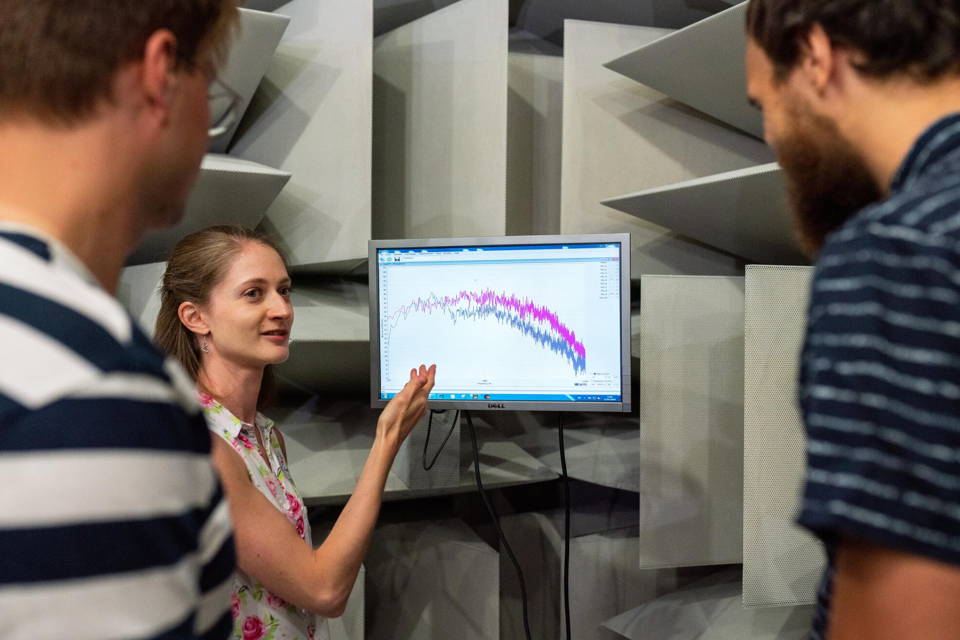
Titan Audio X QUB
Having strategically partnered with Queen's University Belfast, we successfully demonstrated the superior quality of our products through rigorous, data-driven analyses.
Proven To Make The Difference
In a collaboration project in partner with the esteemed Queens University, we sent out to fully investigate the facts surrounding power conditioning and the need for better mains technology to be utilised within HiFi systems.
Queen's University Belfast, officially the Queen's University of Belfast, is a public research university in Belfast, Northern Ireland, United Kingdom. The university received its charter in 1845 as Queen's College, Belfast and opened four years later, together with University of Galway and University College Cork

Why Did We Conduct Testing?
Seeing is believing, but in the HiFi industry that should be considered, 'Hearing is believing'. Many audiophiles are aware of mains technology, however don't fully understand the sonic benefits and its purpose within high-end systems. Unlike other manufactures, we don't just expect you to take our word for it so we partnered with Northern Ireland's leading institute, Queen's University to prove the positive effects our products have when in use and when put up against the competition.
Testing Conducted within the Technology Centre
Through the combined analysis of DGR Group and Queen's University, three core investigations were carried out throughout the duration of testing to clarify the significant differences which can be identified when comparing Titan Audio branded cables to that of standardised mains cables and competitor brands.
-

Power Dips and Transients
Power Amplification reduced voltage dip and fast transient (compared to CE requirements) were imposed on the electrical power supply cordset which were then connected to a high precision amplifiers and speakers
-

Radio Frequency Injection
A radio frequency carrier varied in steps from 100kHz to 80MHz with a 1kHz amplitude modulated interference signal was injected into power cables using a single turn transformer with the resultant voltage measured at the speaker
-

Injection of Interference
Sinewaves from 20Hz to 20kHz were directly injected into the electrical power supply cordset, connected to a high precision amplifier using a E46M3 coupler/decoupler with the output displayed on an oscilloscope

The Purpose
Our products were not designed to be an accessory that is added to an already 'perfect' system. They instead are specifically designed to be a foundational aspect in which your system can be built off. Regardless of the level of your equipment, it will suffer from at some form of disturbance, which will negatively affect it's performance. That means that you never truly experience the full, optimal output from your components without quality quality power distribution.
Results of Testing
-
Noise Reduction
Higher reduction in all noise disturbances
-
Superior Isolation
Providing better protection from interference
-
Greater Safety
Overall higher safety levels giving customers that extra security
-
Tighter Response
Faster, stronger signal strength for accurate sound reproduction
-
Deeper Bass
Greater response resulting in more impactful and present bass
-
Broader Dynamics
Wider frequency range ensuring you hear every detail

In Conclusion
Through a synergistic approach combining our in-house prototyping techniques with rigorous research conducted in partnership with Queen's University Belfast, we definitively established the critical role of proper power conditioning in achieving optimal Hi-Fi audio reproduction. Comparative testing against standardised and competitor products yielded results that proudly recognised the superior quality of our products and innovative designs within the collaborative report. We value this data-driven validation as a robust foundation for future product development, furthering our commitment to enabling audio systems to reach their full potential. We extend our sincere gratitude to Queen's University Belfast for their invaluable contributions to this successful collaboration.



